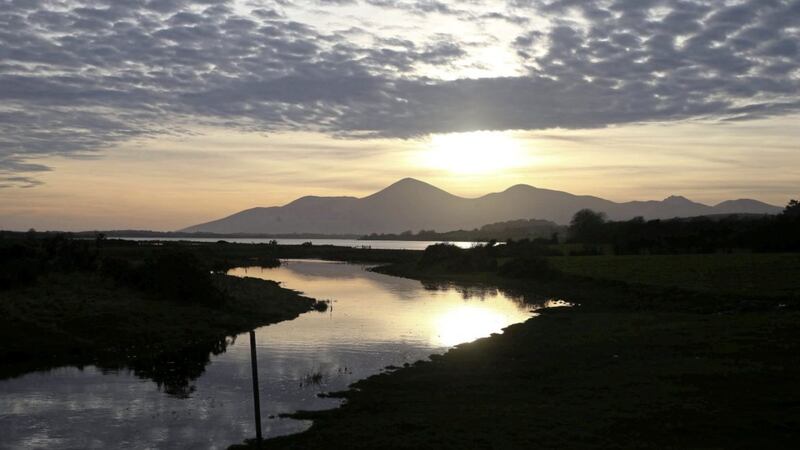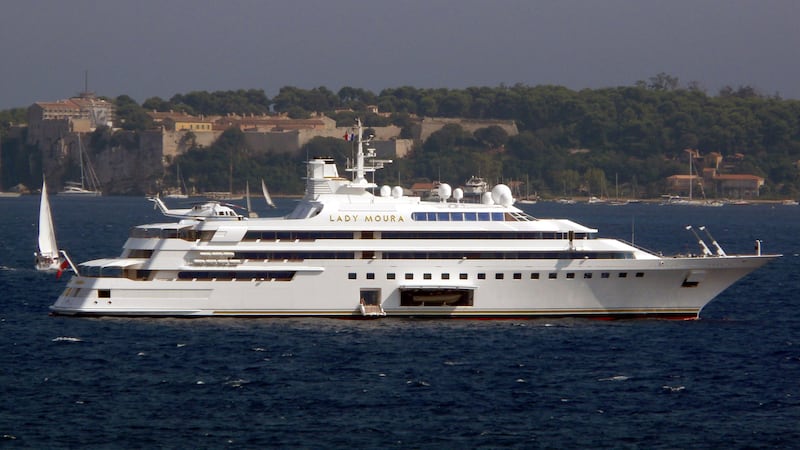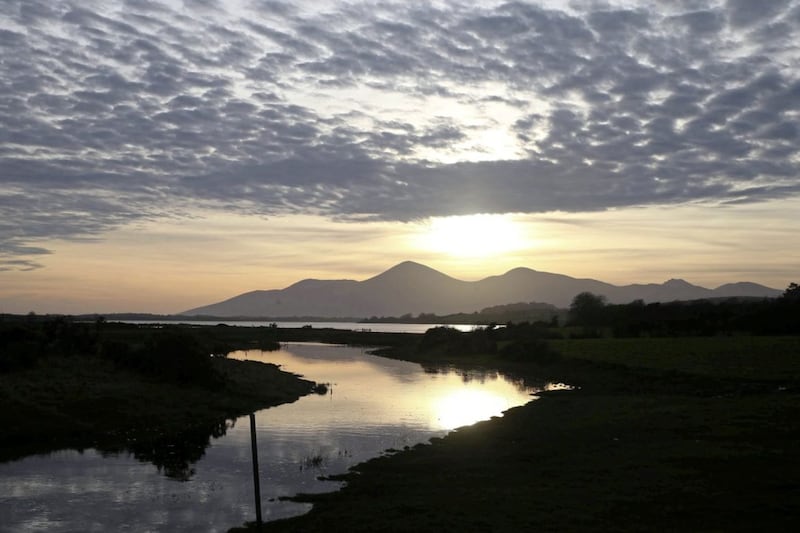MARCH is Saint Patrick's month, with his efforts to spread Christianity and - supposedly - banish snakes from our shores rightly meriting commemoration of his death, on March 17 461.
But there is another Irish saint to remember this month. Saint Domengard was Patrick's contemporary and died soon after him, on March 24 506. The anglicised version of his name is familiar across Northern Ireland as the name of the highest peak in our Mourne Mountains: Donard.
The story of Saint Donard starts with Patrick's travels around Ireland. Legend has it that Patrick never actually set foot in the Mourne Mountains but stopped just south of where Newcastle is today.
There, gripped by thirst, he supposedly thrust his staff into the dry ground to reveal a bubbling stream, which has been known as 'Saint Patrick's Stream' or 'Strupatrick' ever since. Alleged to have healing powers, it also marks the northern extent of the so-called Kingdom of Mourne, which Patrick demarcated when he took off one of his sandals at the stream and launched it southwards.
When it landed 12 miles away in Carlingford Lough, he declared that "the length of that there will never be blood spilled" - a sentence which led to the local phrases 'Kindly Mourne' and 'Twelve Miles of Mourne'.
Rather than step over the stream into Mourne country, Patrick instead returned north to seek help to spread the new faith. One man he approached was a fierce pagan warrior-chief from Maghera, then called Rath Murbolg (which later morphed into 'Murlough'). This warrior chief was Donard.
The story is that Patrick sent a servant to ask Donard to donate supplies to his mission. Donard, who was not prone to giving charity, pointed to a nearby field and told the servant that he could take the bull, knowing it would take 20 men to subdue such a wild beast. He then watched as Patrick's servant narrowly escaped a mauling by the boisterous bull.
But when the servant returned to Patrick to confess his failure, Patrick handed him a halter and sent him back, reassuring him that the bull would willingly submit. The servant nervously did as instructed and was amazed when the animal trotted over, put his head into the halter and followed him home. Patrick's people then killed the bull, cut it up and salted it for sustenance on their journey around Ireland.
When an enraged Donard accused Patrick of theft, Patrick simply replied, "Well then, you shall have your bull back again", as he started to patch the flesh, limbs and skin back together. He then knelt in prayer, with bystanders soon watching the bull reanimate to its ferocious former self.
Donard was so stunned that he dropped to his knees and begged Patrick to baptise him on the spot. He then spent the rest of his life as a hermit, preaching the new faith on the nearby mountain. In time, this peak would come to be called Slieve Donard but back then it was known as Slieve Slainge.
It was originally named after Slainge, a son of Partholón, who led a group of the earliest settlers to Ireland, arriving from Greece around 2600 BC. The Partholóns are credited for introducing new farming and brewing techniques and Partholón himself was involved in the first recorded adultery in Ireland.
A story in the Lebor Gabála Érenn (The Book of the Taking of Ireland), an 11th century collection of poems about early Irish history, talks of Partholón's wife, Delgnat, who lived with him on an island in the River Erne's estuary in Donegal.
One day, while Partholón was out, Delgnat seduced a servant and then shared Partholón's ale with him. When Partholón later drank from the same cup, he recognised the taste of Delgnat and the servant's mouths. Knowing what had happened, he killed the servant and his wife's dog. A remorseless Delgnat blamed Partholón for leaving her alone and expecting her not to act upon temptation.
Partholón's son, Slainge, is also mentioned in the Lebor Gabála Érenn but is more famous because, when he died in 2533 BC, he was buried on top of what is now Slieve Donard.
Anyone who has climbed to the peak has seen the remnants of his tomb - and probably trampled over them. He is supposedly buried under the summit cairn, which is now mostly used as a backdrop for the obligatory social media photo that caps a successful ascent.
Known as The Great Cairn, it is the highest Neolithic passage tomb in Europe and is talked of extensively in Celtic mythology as a portal to Tír na nÓg (The Otherworld), where both Gods and souls of the dead reside.
This tomb is also where Donard resided after Patrick converted him. Legend has it that a cave leads from the tomb directly through the mountain to the shore near Annalong. Some say Donard's body is concealed there, and when anyone tries to find it, he appears and tells them that it was to be "his own peculiar residence until the day of judgement".
The other ancient monument on Slieve Donard is the so-called Lesser Cairn, visible a few hundred metres to the north of the Great Cairn. This was where Donard, realising that the actual summit wasn't visible from the townlands below, built an oratory to give Mass every Sunday.
Both cairns continued to be used after Donard's death in 506, with a pilgrimage made there every July 25 until the 1800s (for Lughnasadh, the start of the harvest season).
The present state of the cairns - a hole in the ground and a pile of rocky rubble - is blamed on a group of Royal Engineers who camped on the summit for four months in 1826, during the Ordnance Survey's triangulation of Ireland. Further destruction occurred when the Belfast Water Commissioners built their tower beside the cairn in the early 1900s.
Rubble or not, these cairns should be treated as more than a setting for social media posts. They have seen people come and go for at least 6,000 years, including the Partholóns and Saint Patrick.
They are reminder of this mountain's deep history - and a reminder that Patrick should not be the only Irish saint commemorated this month.
Ben Acheson is a former political adviser who most recently worked in Afghanistan for both Nato and the EU. Born and raised in Co Down, he is passionate about the Mournes and the area's rich history.



